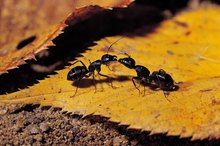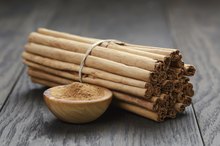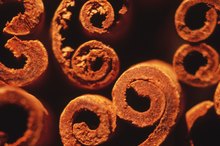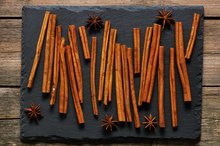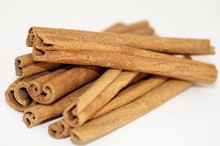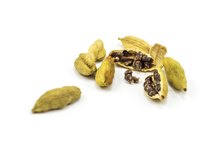What does fact checked mean?
At Healthfully, we strive to deliver objective content that is accurate and up-to-date. Our team periodically reviews articles in order to ensure content quality. The sources cited below consist of evidence from peer-reviewed journals, prominent medical organizations, academic associations, and government data.
The information contained on this site is for informational purposes only, and should not be used as a substitute for the advice of a professional health care provider. Please check with the appropriate physician regarding health questions and concerns. Although we strive to deliver accurate and up-to-date information, no guarantee to that effect is made.
The Difference Between Burma Cinnamon & Ceylon Cinnamon
In the United States, two types of cinnamon are sold in specialty markets and spice shops, though you will likely only find one type in a typical grocery store. These two cinnamons are not alike. One is not true cinnamon at all, but the bark of the trunk and branches of a species of tree related to true cinnamon.
Ceylon Cinnamon
True cinnamon is also known as sweet cinnamon or Ceylon cinnamon 1. It is grown in Sri Lanka, Bangladesh, southern India, Sumatra and Java. Sticks of Ceylon cinnamon feel thin and flaky due to the many layers of the sticks 1. Only the bark of young shoots of the ceylon cinnamon plant are harvested. Ceylon cinnamon possess a subtle but deep, sweet flavor. When purchasing cinnamon, look for a light brown stick that is delicate and not hollow. Ceylon cinnamon is often referred to by its scientific names Cinnamomum zeylanicum and Cinnamomum verum 1.
Cassia
What Can Be Applied to Prevent Ant Bites?
Learn More
Most of the spice sold as cinnamon, both in its whole form and ground, is actually cassia. This spice is also called Chinese cinnamon or Burma cinnamon and is cultivated in China, India and Vietnam. Cassia comes from the bark of the branches and trunk of several species, including Cinnamomum aromaticum, Cinnamomum loureiroi and Cinnamomum burmannii. This cinnamon substitute, in stick form, is dark brown, hard and hollow. The flavor is harsher and stronger than true cinnamon. Burma cinnamon has the smallest amount of essential oil of all cassia species.
- Most of the spice sold as cinnamon, both in its whole form and ground, is actually cassia.
- This cinnamon substitute, in stick form, is dark brown, hard and hollow.
Coumarin
The fragrant chemical coumarin is found in a number of plants, including cassia, or Burma cinnamon. In production, coumarin has been used as a scent in perfumes and colognes, an enhancement in tobacco and as an appetite suppressant. It can be transformed into an anti-coagulant when combined with certain fungi and is used in some blood-thinning medications. According to the European Food Safety Authority, ingesting cassia, a relatively major source of coumarin, in large amounts can cause damage to the liver. The recommended tolerable daily intake of coumarin is 0.1 mg per kilogram of body weight; 1 tsp. of cassia powder contains between 6 to 12 mg coumarin.
- The fragrant chemical coumarin is found in a number of plants, including cassia, or Burma cinnamon.
- In production, coumarin has been used as a scent in perfumes and colognes, an enhancement in tobacco and as an appetite suppressant.
Health Effects
Cinnamon Allergy Symptoms
Learn More
Medical research into possible effects of cinnamon have generally focused on cassia, or Burma cinnamon, rather than Ceylon cinnamon. One purported use of cassia is to reduce blood sugar levels in patients with type 1 or type 2 diabetes. According to the National Institutes of Health, this claim is unsupported by research. Additional effects cassia is thought to have are to relieve gas, reduce muscle spasms, prevent nausea, reduce pain and prevent infections. Scientific evidence does not support the use of cassia in these applications.
- Medical research into possible effects of cinnamon have generally focused on cassia, or Burma cinnamon, rather than Ceylon cinnamon.
- One purported use of cassia is to reduce blood sugar levels in patients with type 1 or type 2 diabetes.
Related Articles
References
- Ceylon Cinnamon: How to Identify Real Cinnamon
- Federal Institute for Risk Assessment: High Daily Intakes of Cinnamon: Health Risk Cannot be Ruled Out; August 2006
- Rao PV, Gan SH. Cinnamon: A Multifaceted Medicinal Plant. Evid Based Complement Alternat Med. 2014;2014:642942. doi:10.1155/2014/642942
- Khan A, Safdar M, Ali Khan MM, Khattak KN, Anderson RA. Cinnamon Improves Glucose and Lipids of People With Type 2 Diabetes. Diabetes Care. 2003;26(12):3215-3218. doi:10.2337/diacare.26.12.3215
- Mollazadeh H, Hosseinzadeh H. Cinnamon effects on metabolic syndrome: a review based on its mechanisms. Iran J Basic Med Sci. 2016;19(12):1258-1270. doi:10.22038/IJBMS.2016.7906
- Gruenwald J, Freder J, Armbruester N. Cinnamon and Health. Crit Rev Food Sci Nutr. 2010;50(9):822-834. doi:10.1080/10408390902773052
- Goel N, Rohilla H, Singh G, Punia P. Antifungal Activity of Cinnamon Oil and Olive Oil against Candida Spp. Isolated from Blood Stream Infections. J Clin Diagn Res. 2016;10(8):DC09-11. doi:10.7860/JCDR/2016/19958.8339
- Murali MR, Naveen SV, Son CG, Raghavendran HRB. Current knowledge on alleviating infections through the use of some commonly known natural products: bench to bedside. Integr Med Res. 2014;3(3):111-118. doi:10.1016/j.imr.2014.04.001
- Hawrelak JA, Myers SP. Effects of Two Natural Medicine Formulations on Irritable Bowel Syndrome Symptoms: A Pilot Study. J Altern Complement Med. 2010;16(10):1065-1071. doi:10.1089/acm.2009.0090
- Walanj S, Walanj A, Mohan V, Thakurdesai PA. Efficacy and safety of the topical use of intranasal cinnamon bark extract in seasonal allergic rhinitis patients: A double-blind placebo-controlled pilot study. Journal of Herbal Medicine. 2014;4(1):37-47. doi:10.1016/j.hermed.2013.12.002
- Connolly M, Axtell A, Hickey S, et al. Chemical Burn From Cinnamon Oil. Eplasty. 2017;17:ic11.
Writer Bio
Nadia Nygaard has been writing and editing since 2005. She is published in "Farm and Ranch Living" and has edited projects as diverse as grant proposals, medical dissertations and tenant law handbooks. She is a graduate of the University of Washington with a Bachelor of Arts in English and women's studies.
